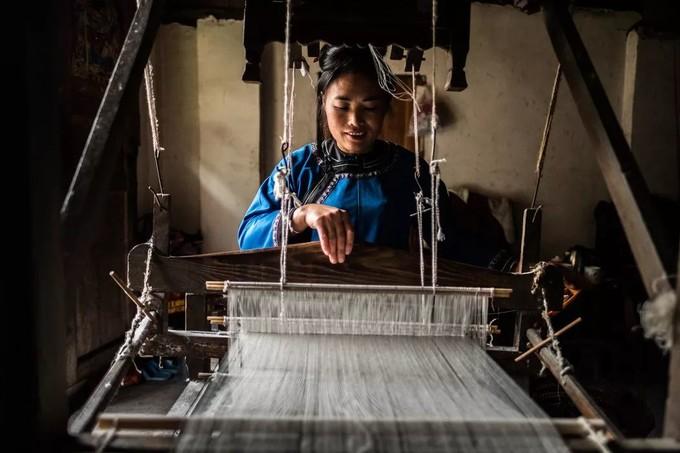Bing'an Ancient Town: Oil-paper Umbrella
The oil-paper umbrella is one of the earliest types of umbrellas in the world, made entirely by hand with materials sourced from nature. It is a crystallization of ancient Chinese wisdom. Since the 1950s and 1960s, under the impact of industrial civilization, oil-paper umbrellas have gradually disappeared from people's daily lives, leaving only their cultural and historical value. There are still more than ten domestic factories producing these products. In Bing'an Ancient Town, you can experience this intangible cultural heritage.
Maliao Village: Handmade Miao Silver
The Miao people are very fond of using silver ornaments. The craftsmanship of Miao silver is complex, with a single piece often going through twenty or more processes to complete. The entire process is done by hand in family workshops. Depending on the need, the silversmith first melts the silver into thin sheets, bars, or wires, and then uses techniques such as casting, embossing, carving, and engraving to create intricate patterns, which are then welded or woven into shape. When traveling, creating a piece of work by yourself is already very meaningful. In the century-old silversmith village of Maliao, you can quickly unlock intangible cultural heritage skills, and who knows, you might become the next outstanding silversmith.
Danzhai County: Traditional Papermaking
Papermaking is one of the four great inventions of China and a significant contribution of the Chinese nation to human civilization. Using tree bark as raw material for papermaking has a long history in China. However, in the deep mountains, the traditional papermaking technique of Shiqiao in Danzhai County, Qiandongnan Prefecture, differs greatly from the methods recorded in Song Yingxing's 'Tiangong Kaiwu' of the Ming Dynasty. The Shiqiao white paper making process belongs to the Tang Dynasty papermaking technique, using local materials such as rich bark, fir roots, and clear spring water. Nearly a dozen processes are completed by hand, including bark collection, river soaking, steaming, pulping, paper scooping, pressing, and drying.
Nangui Village: Batik
Batik is one of the three ancient printing and dyeing techniques in China, historically known as 'laxie', 'dianlawan', or 'layou'. It is the earliest dyeing technique used by humans. After several dynastic changes, batik in the Central Plains was gradually replaced by techniques such as kesi (silk tapestry), brocade, and embroidery. Only in the peripheral minority areas was this technique preserved. Miao batik involves using a wax knife dipped in melted wax to draw patterns on cloth, which is then dyed with indigo. After dyeing, the cloth is boiled in water to remove the wax, revealing the patterns. During the dyeing process, the resist wax naturally cracks, creating unique 'ice patterns' that are particularly charming.











